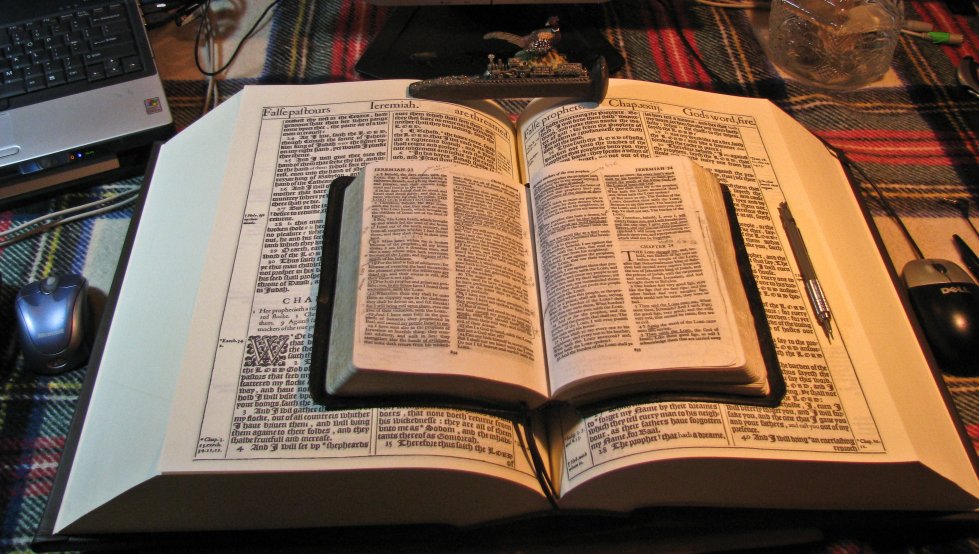 |
 |
|
Part IIIb - Melody The Design of Japheth's Purest Music |
The Design / Theory of Japheth's
Music
We call the music of the Baroque/Classical era to be
Japheth's purest!
Melody
MELODY - An agreeable succession of sounds; a succession of sounds so regulated and modulated as to please the ear. To constitute melody, the sounds must be arranged according to the laws of rhythms, measure, or the due proportion of the movements to each other. Melody differs from harmony, as it consists in the agreeable succession and modulation of sounds by a single voice; whereas harmony consists in the accordance of different voices or sounds.
Isaiah 23:16 - Take an harp, go about the city, thou harlot that hast been forgotten; make sweet melody, sing many songs, that thou mayest be remembered.
Isaiah 51:3 - For the LORD shall comfort Zion: he will comfort all her waste places; and he will make her wilderness like Eden, and her desert like the garden of the LORD; joy and gladness shall be found therein, thanksgiving, and the voice of melody.
Amos 5:23 - Take thou away from me the noise of thy songs; for I will not hear the melody of thy viols.
Ephesians 5:19 - Speaking to yourselves in psalms and hymns and spiritual songs, singing and making melody in your heart to the Lord;
Amos 6:1a-5 - Woe
to them that are at ease in Zion, ... That chant to the sound of the viol,
and invent to themselves instruments of musick, like David;
(chant is a melody that breaks all the design of a true and good melody
as well as chant referring to making 'melodic' music)
Music functions:
a. horizontally (line)
b. vertically (harmony).
While there are many styles of melody design, we will only consider the design of Japheth's purest, written during Baroque and Classical eras.
If each line of music is interesting and has a smooth flow, chances are that the whole work will be also. So what are some of the traits of a "good melody"?
(the audio sermon will have examples of these guidelines from a piano)
1) Rhythm - keep it simple to start with. A good guideline is one note per beat or pulse.
2) Contour - this is the shape of the line. Usually, there is only one highest or lowest note, called the peak. If the peak note is repeated, it looses it's effect, so it is important to have only one peak to your contour. Where should the peak occur? Although there is an infinite number of variations, there are several basic contours that melodic lines generally follow:
a) Arch - the most popular contour. Begins lower, works its way up to a high point between around or just after the midpoint of the melody, then falls back to a lower ending note. An Inverted Arch contour simply flips this shape upside-down, with the lowest peak occurring only once.Melodic lines may briefly zig-zag around these shapes, and sometimes may combine both.b) Ramp - Melodies often save the high or low peak for the last note, for a more climactic ending. An ascending ramp contour begins at or near the lowest not, and gradually and continually works it's way up to the highest peak. a descending ramp contour reverses this, beginning with the higher point, and ending with the lowest.
It is important to note, however, that lines without a contour often sound dull and seem to just "noodle around" on a few notes.
3) A Smooth Connected Line - Our ear more easily hears a series of notes as belonging together when they proceed smoothly and without leaps of larger intervals. The following are the main guidelines used in common practice melodic lines:
a. use about 80% step wise motion (i.e. only the interval of a second) and 20% intervals large than a second.4) Resolve tendency tones -
b. avoid using augmented or diminished intervals, as they are harder to sing, play, and hear as belonging together.
c. whenever leaping an interval larger than a fifth, resolve inward by step. (for example, if you leap down a sixth, the next note should resolve up by second.)
a. Scale degree seven has a tendency to resolve to tonic, unless part of a downward scale passage from tonic to dominant.
b. Scale degree four has a tendency in Major to resolve down to scale degree three.
c. Chromatically altered pitches should resolve by step (the interval of a second) in the same direction as the alteration. For example, added sharps should resolve upward by step, and added flats should resolve down by step.
Matthew 9:17 - Neither do men put new wine into old bottles: else the bottles break, and the wine runneth out, and the bottles perish: but they put new wine into new bottles, and both are preserved. We can't put new words / doctrines in the good ole music styles, nor can we put doctrinally correct (supposedly correct...) into the new music of today.
It pleased God in the 1600's - 1800's - it still can today!
The new music of today is NOT melodic!
It is rhythmic and rhythm appeals to the flesh, thus it pleases the
devil because we know the flesh profiteth nothing!